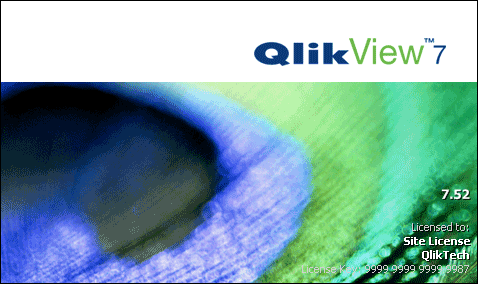Unlock a world of possibilities! Login now and discover the exclusive benefits awaiting you.
- Qlik Community
- :
- Discover
- :
- Blogs
- :
- Product
- :
- Design
- :
- A Historical Odyssey: QlikView 7, QVD files and th...
- Subscribe to RSS Feed
- Mark as New
- Mark as Read
- Bookmark
- Subscribe
- Printer Friendly Page
- Report Inappropriate Content
For QlikView 7 we developed a number of features that would enable developers to make even more advanced applications. One such feature was the Buffer prefix – a prefix that you could put in front of a Load or a SELECT that would store the data on the local machine and automatically use the local data when appropriate. With it, you could e.g. load data from a slow ODBC connection just once a day and for other script runs use the buffer.
The buffered data needed to be compact and something that QlikView could load fast. So, the QVD file was invented to solve this need. Today, hardly anyone uses the Buffer prefix, but QVD files created with the Store command are often used.

Another new feature was the Aggr() function. Already for QlikView 4 we had a solution for having an aggregation as dimension. Well, solution is perhaps not the right word… There was a kludgy, hidden feature with which you could use a count of a field as dimension. Internally it was called the Doctors’ Special. We solved a customer’s problem at the time, but we were not satisfied: we instead wanted a general, good solution for nested aggregations.
Six years later – after much thinking – Håkan (the Inventor) came up with the Aggr() function. It is a general function that can be used both as dimension and as measure. It can be nested and it can internally use any aggregation. In other words: it is a general function for nested aggregations. A by-product was the calculated dimension, which was necessary in order to use the Aggr() as dimension.
The Intel Itanium processor was first released in 2001, but its sales had still not picked up when QlikView 7 was released four years later in 2005. Instead, a new kid appeared on the block: The AMD X64 architecture. The X64 turned out to be both cheaper and faster than the Itanium, and as a consequence it sold better.
We already had an Itanium edition of QlikView and we realized that we also needed an X64 edition. Porting the code was straightforward and QlikView 7 was now shipped in three editions: X86, IA64 and X64.
![]() QlikView 7 also brought the calendar object, the block chart, the box plot, the expression overview, the variable overview, the alerts and the reports.
QlikView 7 also brought the calendar object, the block chart, the box plot, the expression overview, the variable overview, the alerts and the reports.
As a curiosity, I can also mention that QlikView 7 was the first version with scroll bars for the sheet. None of the previous versions had had this. We had always had the opinion that scroll bars would steal screen space and not add any relevant functionality. Instead we had a zoom function so that you could fit the work area to the screen. But - it’s never too late to change one’s mind…
Further reading on the Qlik history:
A Historical Odyssey: QlikView 6 and Multi-threading
You must be a registered user to add a comment. If you've already registered, sign in. Otherwise, register and sign in.